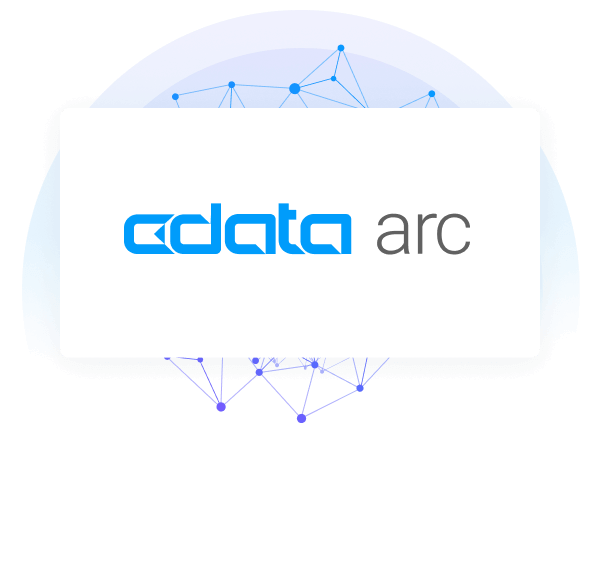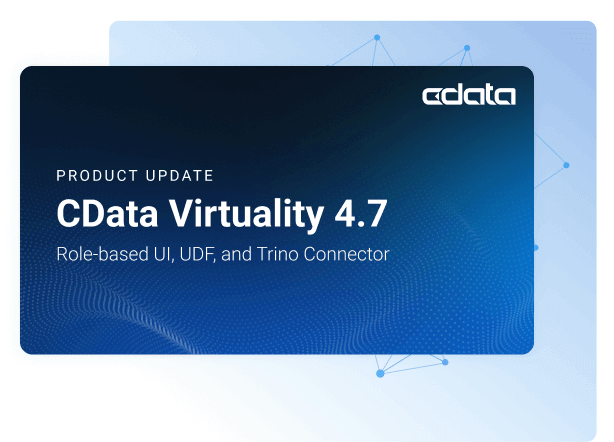Discover how a bimodal integration strategy can address the major data management challenges facing your organization today.
Get the Report →Connect to Bullhorn CRM Data from a Connection Pool in Jetty
The Bullhorn CRM JDBC Driver supports connection pooling: This article shows how to connect faster to Bullhorn CRM data from Web apps in Jetty.
The CData JDBC driver for Bullhorn CRM is easy to integrate with Java Web applications. This article shows how to efficiently connect to Bullhorn CRM data in Jetty by configuring the driver for connection pooling. You will configure a JNDI resource for Bullhorn CRM in Jetty.
Configure the JDBC Driver for Salesforce as a JNDI Data Source
Follow the steps below to connect to Salesforce from Jetty.
Enable the JNDI module for your Jetty base. The following command enables JNDI from the command-line:
java -jar ../start.jar --add-to-startd=jndi- Add the CData and license file, located in the lib subfolder of the installation directory, into the lib subfolder of the context path.
-
Declare the resource and its scope. Enter the required connection properties in the resource declaration. This example declares the Bullhorn CRM data source at the level of the Web app, in WEB-INF\jetty-env.xml.
<Configure id='bullhorncrmdemo' class="org.eclipse.jetty.webapp.WebAppContext"> <New id="bullhorncrmdemo" class="org.eclipse.jetty.plus.jndi.Resource"> <Arg><Ref refid="bullhorncrmdemo"/></Arg> <Arg>jdbc/bullhorncrmdb</Arg> <Arg> <New class="cdata.jdbc.bullhorncrm.BullhornCRMDriver"> <Set name="url">jdbc:bullhorncrm:</Set> <Set name="DataCenterCode">CLS33</Set> <Set name="OAuthClientId">myoauthclientid</Set> <Set name="OAuthClientSecret">myoauthclientsecret</Set> <Set name="InitiateOAuth">GETANDREFRESH</Set> </New> </Arg> </New> </Configure>Begin by providing your Bullhorn CRM account credentials in the following:
- DataCenterCode: Set this to the data center code which responds to your data center. Refer to the list of data-center-specific Bullhorn API URLs: https://bullhorn.github.io/Data-Center-URLs/
If you are uncertain about your data center code, codes like CLS2, CLS21, etc. are cluster IDs that are contained in a user's browser URL (address bar) once they are logged in.
Example: https://cls21.bullhornstaffing.com/BullhornSTAFFING/MainFrame.jsp?#no-ba... indicates that the logged in user is on CLS21.
Authenticating with OAuth
Bullhorn CRM uses the OAuth 2.0 authentication standard. To authenticate using OAuth, create and configure a custom OAuth app. See the Help documentation for more information.
-
Configure the resource in the Web.xml:
jdbc/bullhorncrmdb javax.sql.DataSource Container -
You can then access Bullhorn CRM with a lookup to java:comp/env/jdbc/bullhorncrmdb:
InitialContext ctx = new InitialContext(); DataSource mybullhorncrm = (DataSource)ctx.lookup("java:comp/env/jdbc/bullhorncrmdb");
More Jetty Integration
The steps above show how to configure the driver in a simple connection pooling scenario. For more use cases and information, see the Working with Jetty JNDI chapter in the Jetty documentation.






